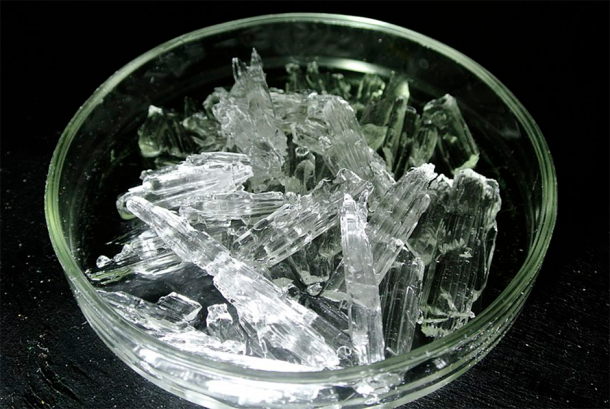
Sulphur and carbon are our two natually available and even common elements. The others that occur do because special conditions help reduce them to metal.
It is also problematic as well. A cloud of fine suphur dust will nicely dust your clothing and sweat will activate the acid and soon reduce it all. Nasty if you let it.
Yet a teaspoon of sulphur powder mixed with molasses is safe to ingest and may be useful.
We have always found more uses as well.
Seeking Brimstone: Why Has Mankind Been Mining Sulfur for Millennia?
20 MARCH, 2023
LEX LEIGH
https://www.ancient-origins.net/history-ancient-traditions/sulfur-0018091
Throughout the ages, sulfur has been a highly versatile and indispensable element, utilized by humans for a myriad of purposes. With its striking yellow crystalline solid appearance, this non-metal chemical element has captured the attention of people across cultures, serving an array of practical and industrial needs throughout history. But just what did ancient people find so special about this mysterious yellow element?
Sulfur, like many elements, has existed for millennia. While it's an essential element in the human body, sulfur's extensive range of industrial applications has made it a highly sought-after commodity. Though odorless and tasteless in its pure form, sulfur's many compounds, including the well-known hydrogen sulfide responsible for the rotten egg smell, have gained notoriety.
Sulfur dioxide and sulfuric acid are compounds formed from sulfur, and they are both integral to the production of chemicals in fertilizers and medicines. Sulfur can also be found in a variety of natural minerals such as gypsum, pyrite, and Epsom salt. Sulfur is often recovered from metal ores such as copper and nickel, as well as from petroleum and natural gas . Since ancient times, humans have relied on sulfur for countless purposes, including fumigation, agriculture, product development, and religious rituals.
Sulfur's strong, pungent odor, for example, made it ideal for fumigating. This led to its use in disinfecting homes, buildings, and clothing of people suffering from infectious diseases. Ancient Romans burnt sulfur to fumigate public areas, such as the Senate House , to prevent the spread of disease. This was also done for spiritual purposes in some areas, such as in ancient Persia to purify the air in religious temples of any lingering evil spirits.
Outside of Europe throughout Asia, sulfur was used as a fertilizer to increase crop yields and as a pesticide to control insect and mite infestations. Sulfur was also important in the production of gunpowder, which was heavily done in ancient China for military purposes before later spreading to other parts of the world.
Volcanic Gold and Circus Pyrotechnics
The mining of sulfur by humans dates back thousands of years. Our earliest record of sulfur mining comes from Sicily, Italy, during the 14th century, where it was extracted from local volcanic deposits. The sulfur from Sicily was used to produce gunpowder as well as for agricultural purposes. Ancient civilizations like the Greeks, Romans, and Chinese also used sulfur for various purposes, though some of the most popular were producing medicine and sulfuric acid.
In ancient Rome, sulfur played a crucial role in public events like chariot races, gladiatorial contests, and the circus. To prevent diseases from spreading within large audiences of people, sulfur was burned in braziers or pots to create pungent smoke. It was believed that this sulfuric smoke would purify the air and ward off any disease present in the crowd.
Sulfur's use didn't stop there. It was also used to create special effects, mixed with other substances to produce colored flames, smoke, and noise. It was also soon discovered that sulfur had a unique ability to ward off and kill insects, which further helped prevent diseases spread by insects. Sulfur became so popular in Rome that ancient Romans even created a god named Sulfur, who was associated with fire and purification.

The form of Sulfuric acid crystals (H2SO4) (AxGxP/ CC BY-SA 4.0 )
From Preserving Wine to Making Goodyear Tires
In the Middle Ages, sulfur was widely used for medicinal purposes. People would use sulfur to fumigate their homes and livestock to prevent diseases from spreading between both people and animals. In fact, one of the first civilizations to use sulfur as a disinfectant was the ancient Greeks, though this use later spread to other regions seeking solutions for widespread disease.
In addition to medicinal uses , sulfur was also used for practical purposes in the Middle Ages. It was sometimes used as a preservative for foods including wine and fruit, as it was believed that it could prevent spoilage. Some wineries used sulfur candles to purify their cellars and to help preserve the wine as it aged. Beyond food, sulfur was used to tan leather in addition to its popular use in creating gunpowder.
As the dawned, sulfur became an essential raw material for the production of sulfuric acid, which was heavily used to make several industrial chemicals. For example, Sulfur was used to make products such as vulcanized rubber, which was invented by Charles Goodyear in the early 19th century. Vulcanizing rubber made it more durable and weatherproof, so it could be used for many long-term applications such as shoe soles, children’s toys, and car tires.
This increased demand for sulfur led to the development of large-scale mining operations in countries like the United States, Russia, and Japan. From its earliest use in ancient times to its continued importance in the modern world, the story of sulfur is one of adaptability and versatility.

An ad from Goodyear tires dated 1923. (Don O’Brien/ CC BY 2.0 )
The Sulfur of Today and Beyond
Sulfur has been mined for thousands of years, and its importance continues today. Sulfur is still mined worldwide for the production of sulfuric acid, which is still used in many products including fertilizer, plastic, and detergent. But that's not all: sulfur is also still used in agriculture as a fertilizer, helping give plants necessary nutrients as they grow. It’s also used in the production of rubber, explosives, and even to bleach paper to make it brighter.
Sulfur’s versatility and usefulness have been recognized by numerous civilizations throughout history. This bright yellow element has contributed to human advancement in countless ways, and its use will only continue to shape our civilization in the future.
Top image: Close up of "fumarola" on top of Vulcano Island, Sicily. Earliest dates of sulfur mining were at this fumarole. Source: Zapatisthack by Adobe Stock
By Lex Leigh
No comments:
Post a Comment